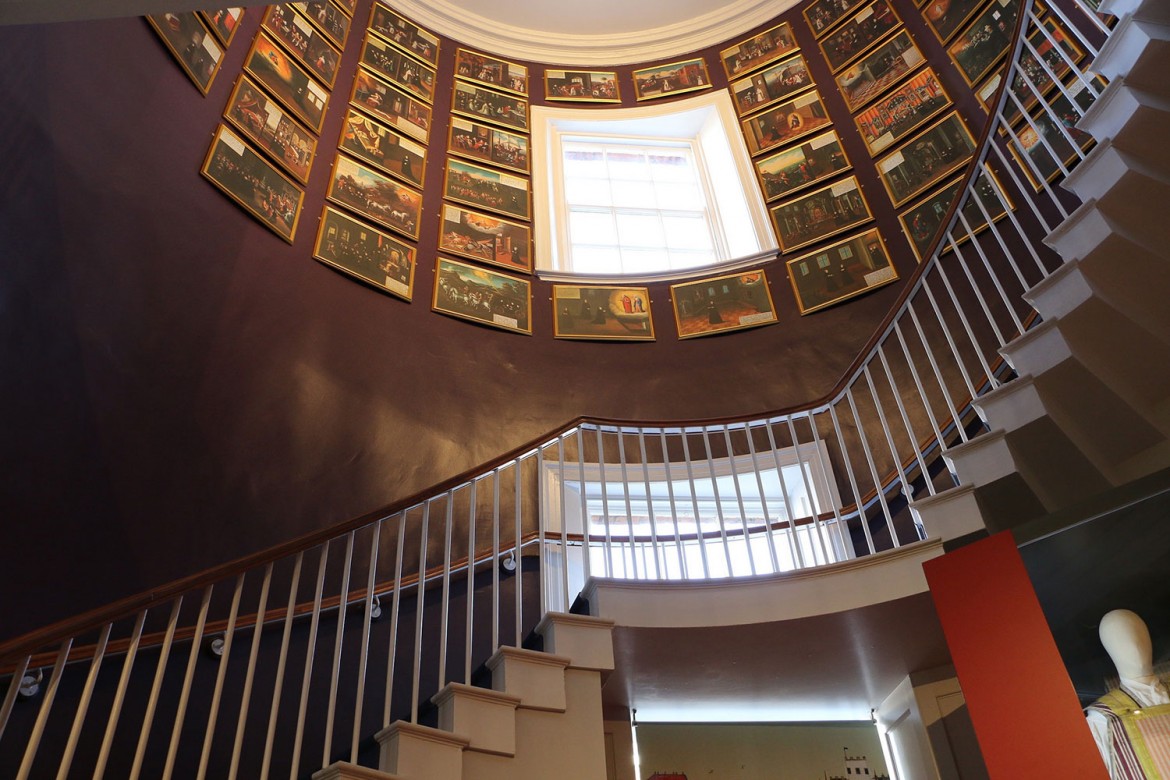
She’s famous for finding fault with struggling hotels. But Alex Polizzi had nothing but praise for a very special place to stay in York.
17 Blossom Street, York. YO24 1AQ
Mon-Sat @ 10am to 5pm
£2-£4.50
But then, the Bar Convent on Blossom Street is not only a beautiful building with an extraordinary history – Alex also has a close connection to the charity that runs it.
The presenter of Channel 5’s The Hotel Inspector was invited by her former headteacher, Sister Frances Orchard, to open York’s newest tourist attraction. Sister Frances is chair of the Bar Convent Trust.
More than £1 million has been spent creating the Living Heritage Project. Over two floors, this exhibition tells the remarkable stories of The Bar Convent and its founder Mary Ward.
Alex said:
The importance of the roles of Catholic women is something that still needs to be pushed forward because we still haven’t won the battle.

Altogether more than £2 million has been spent restoring The Bar Convent which comprises Grade I listed 18th century buildings on the site of the original 1686 house.
The guest rooms have also been revamped. So what does Alex think of the three-year project?
The convent and Catholic women are not as well known as they should be in such a tourist city. Hopefully this redevelopment will help to fix the problem by showing what a historic and important place it is to visit.


Although the stunning atrium gives visitors a wonderful introduction to the convent, its beauty belies a sometimes torrid history.
The convent has witnessed some turbulent and violent periods in English history. It was founded in 1686 as a school for Catholic girls.
It’s been attacked by mobs, has housed Bosnian refugees and has even been bombed by the Luftwaffe.

One of the key figures in its formation was Sister Mary Ward, a radical, Yorkshire-born pioneer of girls’ education across Europe.
Alex said:
I have a daughter myself, and to see what Mary Ward and the sisters here taught me is so admirable, it is incredibly important that this notion continues.



The old museum has been replaced with a state-of-the art exhibition that charts the 300 year history of the Bar Convent.
In 1686, a time of great danger for all Catholics in England, a woman named Frances Bedingfield purchased a small parcel of land just outside York’s walls. She signed the deed under an alias.


The ladies who then lived and worked beneath the building’s dull slate roof wore slate-coloured gowns, and called themselves the ‘Ladies of the Bar’.
Nobody knew the truth they concealed. For the early sisters of The Bar Convent, discovery meant punishment – and even death.




The Bar Convent Chapel is one of the hidden gems of York. It has been a place of prayer for nearly 250 years. Designed by the well-known York architect Thomas Atkinson, it was completed in 1769.
For most of the 18th century Catholic chapels and services were still illegal and there are many features which reflect this in the design of the building.

The chapel is placed at the back of the complex of buildings which make up the convent, hidden from view from the main street, and also from the garden.
The plain lunette windows reveal nothing of its ecclesiastical nature, and the dome, lower than usual, is concealed from outside view by a slate pitched roof.
There is also a priest’s hole in which the priest could be hidden during a raid, although there is no evidence that it was ever used.
This hiding place was forgotten and the entrance lost, until its rediscovery during electrical works in the early 20th century. Visitors can now see inside.









